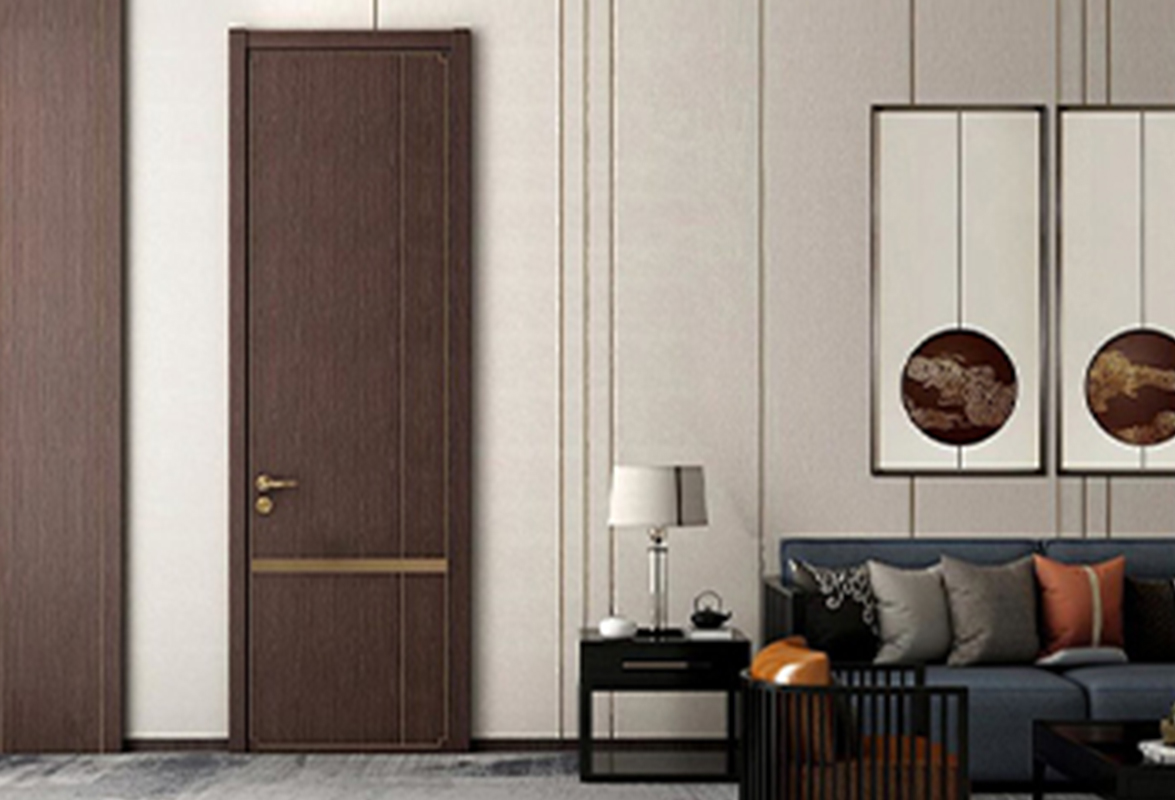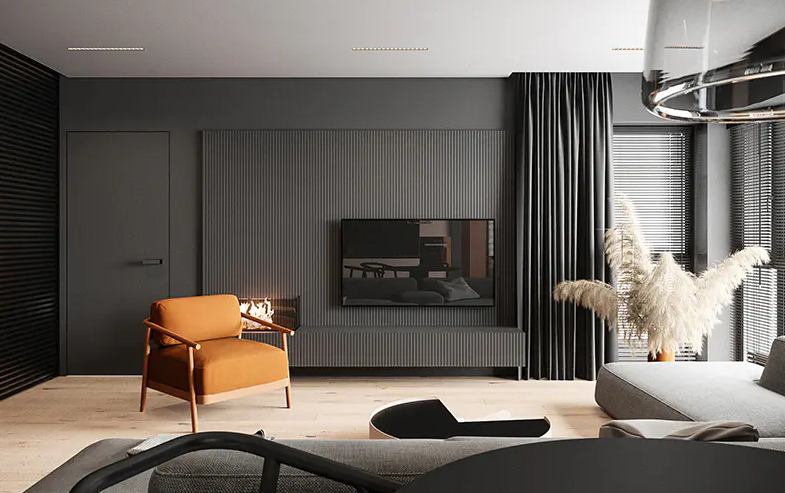In recent years, wall panels have increasingly found their way into outdoor applications, moving beyond their traditional role in interior spaces. Advances in materials such as Wood Plastic Composite (WPC), aluminum, and treated PVC have made panels more durable, weather-resistant, and capable of withstanding sun, rain, and temperature fluctuations. Manufacturers and designers at wall panel factory have developed solutions that allow panels to be used for facades, balconies, garden features, and commercial exteriors without compromising longevity. Additionally, the variety of finishes, colors, and textures provides aesthetic flexibility, helping panels blend seamlessly with modern architectural styles. Ease of installation, modular design, and low maintenance further enhance their appeal, offering practical solutions for both residential and commercial projects. As sustainability gains importance, many panels also incorporate recycled materials and environmentally friendly coatings. Together, these factors have made outdoor wall panels a viable, stylish, and functional choice for contemporary construction.
Types of Wall Panels for Outdoor Applications
When considering wall panels for outdoor use, material selection is critical for ensuring durability, aesthetics, and overall performance. Among the many widely used materials, WPC sheets have gained immense popularity. Composed of a mixture of wood fibers and high-quality plastics, WPC panels combine the natural look of wood with the resilience of synthetic materials. This composition provides notable outdoor advantages:
Key Features of WPC Panels:
-
Water-resistant, suitable for wet environments
-
Insect-resistant, preventing damage over time
-
Weather-resistant, tolerates rain, wind, and humidity
-
Lightweight and easy to handle
However, WPC panels are not entirely free from limitations. Prolonged exposure to ultraviolet radiation can cause the surface to fade, and temperature fluctuations may cause slight expansion or contraction, so careful installation and regular maintenance are required. Some Factory has optimized panel formulations and offered pre-treated finishes to enhance UV protection and dimensional stability, making WPC a reliable choice for modern outdoor projects.
Aluminum panels represent another highly versatile option for exterior use. Known for their lightweight nature, corrosion resistance, and adaptability to various surface treatments, aluminum panels can withstand harsh outdoor conditions while maintaining a sleek, contemporary appearance. Surface treatments such as anodizing and powder coating further protect the panels from oxidation, fading, and environmental wear.
Advantages of Aluminum Panels:
| Feature | Benefit | Notes |
|---|---|---|
| Lightweight | Easy to install, reduces structural load | Suitable for large façades |
| Corrosion-resistant | Withstands rain and humidity | Minimal maintenance required |
| Surface treatments | Anodizing or powder coating enhances durability | Protects from UV and oxidation |
| Long lifespan | Can last decades with proper care | Ideal for commercial projects |
PVC panels offer a practical solution for outdoor cladding, providing moisture and mold resistance. They are lightweight, easy to install, and come in various colors and textures. However, prolonged exposure to direct sunlight may accelerate aging or discoloration. Wall Panel Factory provides UV-stabilized PVC panels that retain color vibrancy and structural integrity under extended outdoor exposure.
By understanding the unique properties of WPC, aluminum, and PVC panels, and leveraging the expertise of manufacturers like Wall Panel Factory, designers and homeowners can make informed decisions that balance durability, maintenance, and visual appeal. Proper selection and installation allow outdoor wall panels to enhance building aesthetics while delivering long-term performance in diverse environmental conditions.
Impact of Outdoor Environment on Wall Panels
Outdoor wall panels face a variety of environmental challenges that can affect both their appearance and long-term performance. Understanding these factors is essential for selecting the right materials and ensuring proper installation. Sunlight, rain, humidity, and temperature fluctuations are the primary influences that outdoor panels must endure, and each can have distinct effects on different panel types.
Sunlight and Ultraviolet (UV) Radiation
Prolonged exposure to sunlight will gradually damage the wall panels, causing them to fade, discolor, and age. UV radiation can break down polymers in WPC and PVC panels, reducing their mechanical strength over time. Even aluminum panels, while resistant to corrosion, may experience coating degradation if not properly treated. To mitigate these effects, UV-resistant coatings and finishes are crucial. Wall Panel Factory has developed advanced UV-stabilized panels that maintain color and structural integrity under prolonged sunlight exposure, ensuring both aesthetic appeal and durability.
Rainwater and Humidity
Moisture is another critical factor for outdoor wall panels. Water infiltration can cause swelling, warping, and mold growth, particularly in WPC or untreated composite panels. PVC and aluminum panels generally resist moisture better, but improper installation or poor drainage can still lead to localized damage. Designing panels with proper overlaps, drainage channels, and protective coatings can significantly reduce water-related issues. Wall Panel Factory integrates water-resistant treatments and precise structural designs in their outdoor panels to minimize risks of water damage.
Temperature Fluctuations and Climate Changes
Panels installed outdoors are subjected to repeated cycles of heating and cooling, which can cause thermal expansion and contraction. Over time, this movement may create cracks, loosening of joints, or deformation in panels that are not adequately engineered for these stresses. Selecting materials with compatible thermal expansion rates and using flexible installation systems can help prevent these problems.

Summary of Environmental Impacts and Mitigation Measures:
-
Sunlight & UV Exposure: Causes fading and aging → Use UV-resistant coatings
-
Rain & Humidity: Leads to water infiltration, swelling, mold → Employ water-resistant coatings and proper drainage design
-
Temperature Changes: Causes cracks and expansion/contraction issues → Select materials with thermal stability and proper installation methods
By carefully considering these environmental factors, designers and property owners can ensure that outdoor wall panels remain visually appealing and structurally sound over the years. Leveraging the expertise of manufacturers like Wall Panel Factory ensures that panels are designed to meet the specific challenges of outdoor installation, combining durability, aesthetic quality, and practical performance.
Design and Aesthetic Considerations for Outdoor Wall Panels
Selecting the right panel material is central to achieving a harmonious design that complements the surrounding environment. Different materials offer unique opportunities for color, texture, and pattern that can dramatically influence the perception of a building.
- WPC Panels: Mimic natural wood grains, providing warmth and familiarity, ideal for residential or traditional-style buildings.
- Aluminum Panels: Offer sleek, metallic finishes suited for modern, minimalist designs, with high durability and weather resistance.
- PVC Panels: Highly versatile in color and surface treatment, accommodating both traditional and contemporary aesthetics.
Form, Plasticity, and Integration with Landscape
The shape and arrangement of wall panels allow architects to create visually engaging surfaces beyond flat walls. Panels can be curved, textured, or arranged in staggered, vertical, horizontal, or interlocking sequences to add rhythm and visual interest. Coordination with surrounding landscapes, such as greenery, stone, or water features, enhances the overall aesthetic and ensures a cohesive outdoor environment. Panels can also interact with sunlight and seasonal changes, creating dynamic effects that change over time.
Practical Considerations
Aesthetic choices should also support functionality. High-quality coatings maintain color fidelity and reduce visible wear, while decorative elements such as perforations for ventilation or embedded lighting can enhance both utility and beauty. Thoughtful panel selection ensures that outdoor surfaces remain visually appealing while providing long-term performance.
Project Cohesion and Visual Identity
For larger residential or commercial developments, consistent use of colors, textures, and patterns across multiple façades creates a unified identity, while subtle variations prevent monotony. Wall panels can support branding, thematic design, and environmental harmony, balancing aesthetic appeal with practical construction needs.
Cost Analysis and Value for Money of Outdoor Wall Panels
When selecting wall panels for outdoor applications, understanding material costs is essential for balancing budget and performance.
- WPC Panels: Generally positioned in the mid-range price bracket, WPC panels combine wood fibers with plastics, providing a natural look with moderate cost. Their material cost is influenced by wood content, polymer quality, and any additional surface treatments such as UV or water-resistant coatings.
- Aluminum Panels: Typically higher in upfront material cost due to the price of raw aluminum and specialized surface treatments like anodizing or powder coating. Despite the higher initial investment, aluminum offers long-term durability, minimal maintenance, and resistance to corrosion, which can offset the upfront expense over time.
- PVC Panels: In terms of materials, PVC panels are generally a cost-effective option; they are lightweight, easy to transport, and available in a variety of colors and textures. However, depending on UV exposure and specific climatic conditions, additional UV stabilization treatments or surface treatments may be required, which can slightly increase the actual cost.
Installation and Maintenance Costs
Material cost is only one component of total project expenditure. Installation methods, labor requirements, and long-term maintenance significantly affect overall cost-effectiveness.
-
WPC Panels: Moderate installation complexity due to panel weight and thermal expansion considerations. Maintenance is required to prevent UV fading and water-related swelling over time.
-
Aluminum Panels: Lightweight and precise, aluminum panels can reduce labor costs during installation. Minimal maintenance is needed, mostly periodic cleaning to preserve appearance.
-
PVC Panels: Very easy to install due to light weight and modular design. Maintenance is low but may include surface cleaning and occasional checks for UV-related degradation.
By factoring in installation and maintenance, the overall value proposition of each material can be assessed more accurately, helping designers and property owners make informed decisions.
Lifespan and Long-Term Economic Benefits
Long-term performance is a key factor in evaluating value for money. While initial costs may be higher for aluminum or treated WPC panels, their extended lifespan and reduced maintenance can offer significant savings over decades. PVC panels may require replacement or additional treatment sooner in harsh climates, potentially offsetting the initial material cost advantage. Wall Panel Factory offers detailed product lifespan projections for each material type, assisting clients in estimating total life-cycle costs.
Material Selection Strategy by Climate Zone
Environmental conditions strongly influence cost-effectiveness and performance.
- Hot and Sunny Climates: Materials with high UV resistance, such as treated WPC or UV-stabilized PVC, are preferred. Aluminum panels with reflective coatings can also reduce heat absorption.
- Humid or Rainy Regions: Water-resistant and corrosion-proof panels like aluminum or WPC with proper coatings perform better, minimizing swelling, mold, or rust-related repairs.
- Temperate Climates: A wider range of materials, including PVC panels, may be suitable, providing more budget-friendly options without sacrificing longevity.
By combining these factors, designers and property owners can optimize both aesthetics and economics. Proper planning ensures that the chosen wall panels deliver long-term visual appeal, functional durability, and overall cost efficiency.
Common Questions for Outdoor Wall Panels
Expert Insights from Architects and Material Specialists
Outdoor wall panels often raise questions from designers and builders regarding durability, aesthetics, and performance in different climates. Architects and material specialists provide valuable guidance based on their experience.
- Weather Resistance and Material Choice:
Selecting materials suitable for specific climates is crucial. WPC panels offer a balanced solution for areas with moderate sun and occasional rain, combining a natural wood-like appearance with reasonable durability. Aluminum panels are highly recommended for humid or coastal environments due to their corrosion resistance and ability to maintain structural integrity over long periods. PVC panels are often chosen for temperate climates where UV exposure is moderate; however, UV-stabilized PVC is advisable to prevent discoloration and surface degradation over time. Specialists also highlight that surface treatments, such as anti-UV coatings or waterproof finishes, greatly enhance panel longevity. - Aesthetic Integration and Design Flexibility:
Designers often inquire about achieving visually appealing façades without compromising functionality. Experts emphasize that panel texture, color, and arrangement are essential. Curved or textured panels can add depth and a sense of dynamism, while staggered or interlocking layouts create visual interest and rhythm. The choice of finish and material should align with the surrounding architectural style and landscape. Proper coordination ensures the panels harmonize with other elements, including stone, greenery, or water features, resulting in a cohesive outdoor design. - Maintenance and Longevity:
Concerns regarding long-term upkeep are common. Experts recommend periodic inspections, light cleaning, and protective coatings to prevent fading, cracking, or swelling. Correct installation, allowing for thermal expansion and contraction, helps avoid structural issues. Regular care minimizes maintenance costs and extends the life of the panels, ensuring that they continue to perform effectively while maintaining their aesthetic appeal.
User Experiences and Real-World Feedback
In addition to expert advice, real users provide practical insights on outdoor wall panel performance, highlighting both advantages and limitations.
- Performance in Extreme Conditions:
Many homeowners and contractors report that WPC panels can expand slightly under high temperatures and contract in colder climates, which can create minor gaps or movement if installation does not account for thermal expansion. Aluminum panels, in contrast, are praised for their ability to retain shape and color under heavy rain, strong sunlight, or high humidity. PVC panels are easy to install and lightweight, but prolonged exposure to direct sunlight can sometimes result in minor discoloration or surface brittleness. Understanding how each material responds to environmental stress helps users plan installation and maintenance appropriately. - Ease of Maintenance:
Maintenance experiences vary by material type. Aluminum and PVC panels generally require minimal care—cleaning dust or dirt occasionally is sufficient. WPC panels, while visually appealing, benefit from periodic sealing or surface treatment to protect against moisture and UV damage. Users report that even light maintenance routines can prevent small problems from escalating, ensuring panels remain attractive and functional for years. - Aesthetic Satisfaction:
Many users highlight the positive impact of outdoor wall panels on overall building appearance. They appreciate the versatility in color, texture, and patterning, which allows panels to suit both modern and traditional architectural styles. Patterned or staggered panel arrangements are particularly popular for creating depth and visual interest. Beyond aesthetic appeal, users note that well-chosen panels can improve property value and provide a distinctive, high-quality exterior finish.
Practical Tips from Users:
-
Thermal Expansion: Leave slight gaps during installation to accommodate panel movement.
-
Sun Exposure: Apply UV-protective coatings for WPC and PVC to maintain color.
-
Moisture Management: Ensure proper drainage and waterproof coatings to prevent swelling or mold.
-
Cleaning: Regular dusting or hosing down prevents dirt accumulation.
-
Design Coordination: Match panel colors and textures with surrounding elements to achieve a cohesive outdoor environment.
By combining professional guidance with real-world feedback, property owners and designers can anticipate common challenges and implement effective solutions. Thoughtful material selection, appropriate installation practices, and regular maintenance ensure that outdoor wall panels remain both functional and visually appealing, even under diverse environmental conditions. This comprehensive approach helps users maximize the performance, longevity, and aesthetic impact of their exterior wall solutions.

Outdoor wall panels have increasingly become a preferred choice for both residential and commercial façades, offering a balance between aesthetics, durability, and functionality. Selecting the right material—whether WPC, aluminum, or PVC—depends on factors such as climate, design preferences, maintenance requirements, and long-term cost considerations. WPC panels provide a warm, natural look but require UV and moisture protection; aluminum panels offer exceptional longevity with minimal upkeep; PVC panels deliver versatility and cost efficiency when adequately stabilized for sun exposure.
Proper installation, routine maintenance, and thoughtful design integration are essential to ensure panels maintain their appearance and performance over time. Coordinating panel textures, colors, and patterns with architectural and landscape elements enhances visual appeal, while attention to environmental challenges—such as temperature fluctuations, sunlight, and moisture—prevents premature wear or structural issues.
For architects, designers, and property owners seeking reliable solutions, partnering with an experienced manufacturer can simplify material selection and ensure high-quality outcomes. Zhejiang Haibo Door Co., Ltd. specializes in providing innovative wall panel solutions with a focus on durability, design flexibility, and practical performance. Their products support diverse architectural styles and outdoor conditions, while professional guidance helps clients optimize both aesthetic and functional results.
Incorporating expert recommendations and real-world insights into planning and installation can significantly improve long-term satisfaction. By understanding the unique characteristics of each panel type and applying appropriate preventive measures, property owners can enjoy beautiful, resilient façades that enhance the overall value and appeal of their buildings. Zhejiang Haibo Door Co., Ltd. offers the expertise, materials, and solutions necessary to achieve these outcomes, making it a trusted partner for outdoor wall panel projects.

 English
English русский
русский Français
Français Español
Español bahasa Indonesia
bahasa Indonesia عربى
عربى



